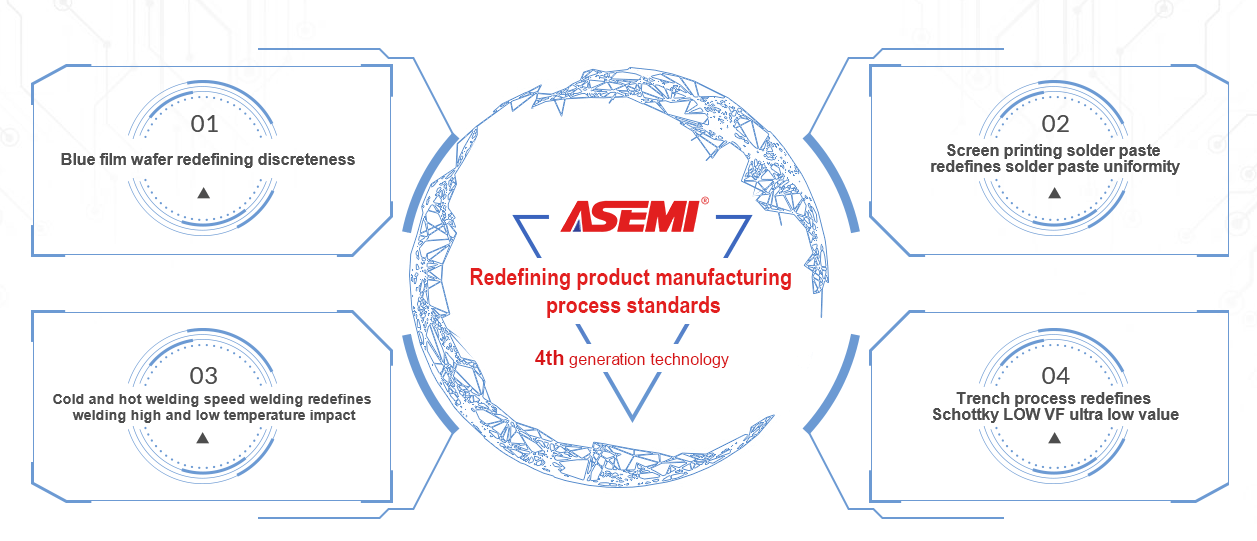ASEMI'S introduction of Schottky Diodes
Return ListSource:Asemi Date:2019.10.16 Read:0
The principle of Schottky diode:
The Schottky diode is a metal-semiconductor device in which a noble metal (gold, silver, aluminum, platinum, etc.) A is a positive electrode, and an N-type semiconductor B is a negative electrode, and a barrier formed on the contact surface thereof has a rectifying property.
Advantages of Schottky diodes:
Schottky diodes, also known as Schottky barrier diodes, are a low-power, ultra-high-speed semiconductor device. The remarkable feature is that the reverse recovery time is extremely short (can be as small as a few nanoseconds), and the forward voltage drop is only about 0.4V. In the case of the same current, its forward voltage drop is much smaller. In addition, its recovery time is short.
Disadvantages of Schottky diodes:
The withstand voltage is relatively low and the leakage current is large. It is widely used as high frequency, low voltage, high current rectifier diode (such as switching power supply secondary rectifier diode), freewheeling diode, protection diode, also used as a rectifier diode, small signal detection diode in microwave communication and other circuits. It is more common in communication power supplies, inverters, etc.
Schottky diode package:
Schottky diodes are available in both leaded and surface mount (sMD) packages. Schottky diodes in leaded packages are commonly used as high frequency, high current rectifier diodes, freewheeling diodes or protection diodes.
It is available in single-tube and pair-tube (dual-diode) packages. Schottky has three types of pinouts for the tube, which has a common cathode (the cathode of the two tubes is connected), a common anode (the anode of the two tubes is connected), and a series (the anode of one diode is connected to the cathode of the other diode).
Schottky diodes with surface mount are available in a variety of packages, including single-tube, double-tube, and triple-tube types, with A~19 pinouts.
Schottky diode features:
1). Since the Schottky barrier height is lower than the PN junction barrier height, its forward conduction threshold voltage and forward voltage drop are both lower than the PN junction diode (about 0.2V lower).
2). Since the Schottky diode is a majority carrier conductive device, there is no minority carrier lifetime and reverse recovery problem. The reverse recovery time of the Schottky diode is only the charge and discharge time of the Schottky barrier capacitor, which is different from the reverse recovery time of the PN junction diode. Since the reverse recovery charge of the Schottky diode is very small, the switching speed is very fast and the switching loss is also very small, which is especially suitable for high frequency applications.
However, since the reverse barrier of the Schottky diode is thin and breakdown is extremely likely to occur on its surface, the reverse breakdown voltage is relatively low. Since the Schottky diode is more susceptible to thermal breakdown than the PN junction diode, the reverse leakage current is larger than the PN junction diode.





 Hotline
Hotline



